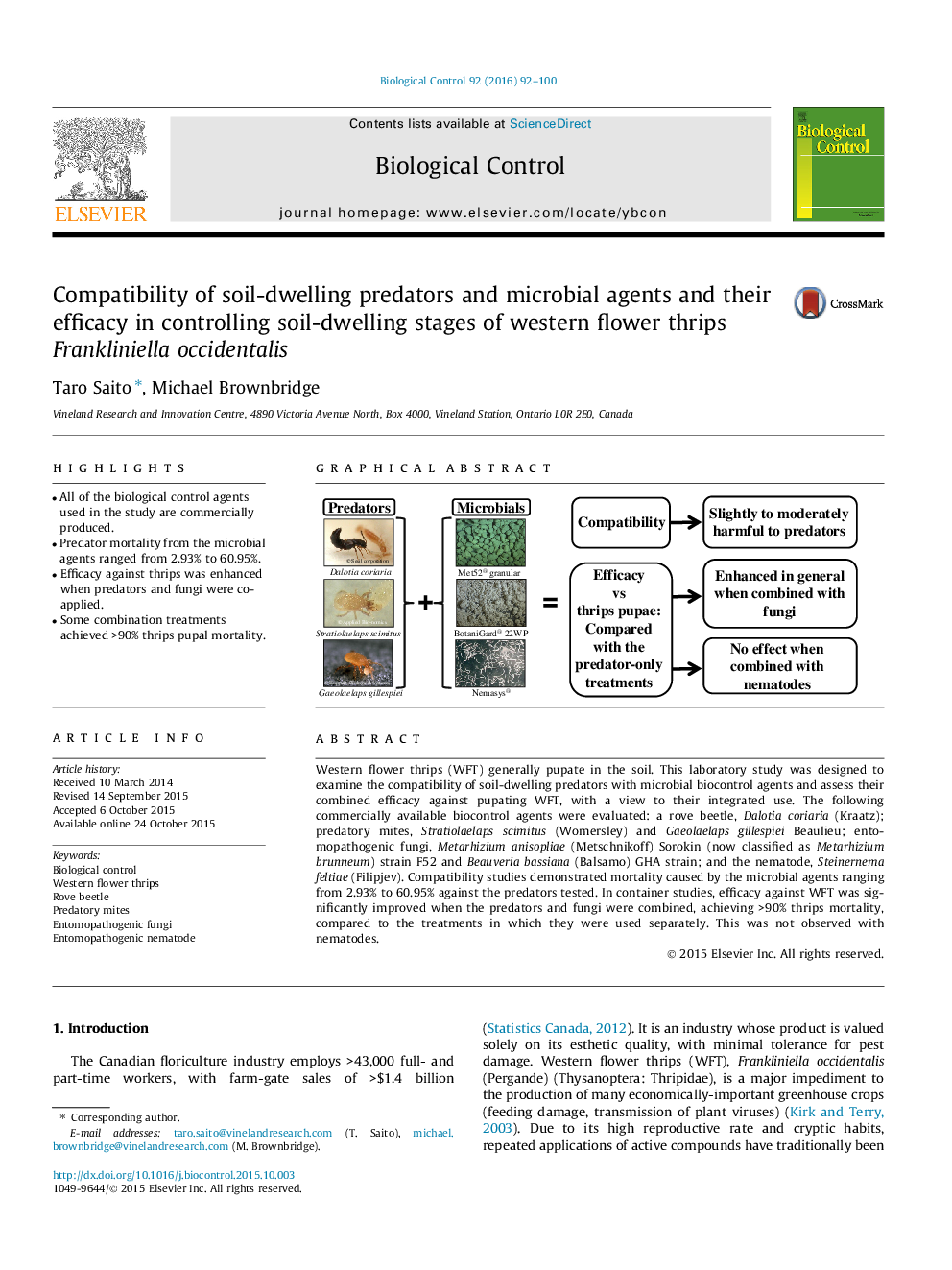| کد مقاله | کد نشریه | سال انتشار | مقاله انگلیسی | نسخه تمام متن |
|---|---|---|---|---|
| 4503710 | 1624242 | 2016 | 9 صفحه PDF | دانلود رایگان |

• All of the biological control agents used in the study are commercially produced.
• Predator mortality from the microbial agents ranged from 2.93% to 60.95%.
• Efficacy against thrips was enhanced when predators and fungi were co-applied.
• Some combination treatments achieved >90% thrips pupal mortality.
Western flower thrips (WFT) generally pupate in the soil. This laboratory study was designed to examine the compatibility of soil-dwelling predators with microbial biocontrol agents and assess their combined efficacy against pupating WFT, with a view to their integrated use. The following commercially available biocontrol agents were evaluated: a rove beetle, Dalotia coriaria (Kraatz); predatory mites, Stratiolaelaps scimitus (Womersley) and Gaeolaelaps gillespiei Beaulieu; entomopathogenic fungi, Metarhizium anisopliae (Metschnikoff) Sorokin (now classified as Metarhizium brunneum) strain F52 and Beauveria bassiana (Balsamo) GHA strain; and the nematode, Steinernema feltiae (Filipjev). Compatibility studies demonstrated mortality caused by the microbial agents ranging from 2.93% to 60.95% against the predators tested. In container studies, efficacy against WFT was significantly improved when the predators and fungi were combined, achieving >90% thrips mortality, compared to the treatments in which they were used separately. This was not observed with nematodes.
Figure optionsDownload as PowerPoint slide
Journal: Biological Control - Volume 92, January 2016, Pages 92–100